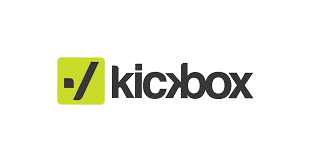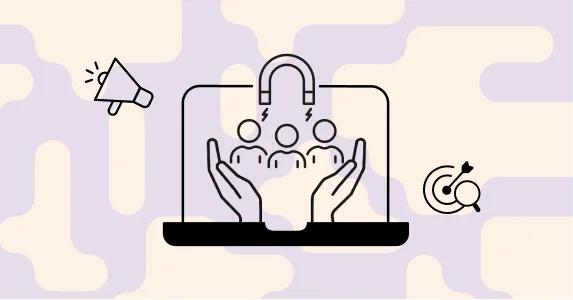Industry experts predict email deliverability trends that will impact your email program in 2022. Will you easily reach the inbox this year? Find out…
Email marketing went through peaks and valleys in 2021.
Seat belts fastened or not, we all participated in the rollercoaster ride.
Just like everything else, email went through a rapid evolution.
- High-profile mergers and acquisitions took place
- Gmail announced full support for the BIMI standard
- Email volumes and interactivity within emails surged
- Usage of AI tools in email programs increased
As for the low point, Apple’s Mail Privacy Protection (MPP) shook the email marketing industry. Pixel blocking led to ‘ user opens’ becoming unreliable. Until now, ‘open rates’ had been extensively used to indicate the deliverability status for email customer engagement campaigns.
What factors will influence email deliverability in the coming year?
What will be the key to reaching the inbox in 2022?
To find the answers, we sought out five of the brightest email deliverability geeks and asked them to predict the key trends that will affect inboxing in 2022.
1. Lasting effects of privacy and data protection will continue
Email marketers were certainly caught unawares by Apple’s MPP announcement back in June 2021. It left several questions unanswered; marketers scrambled to make sense of their campaign data. According to Jennifer Lantz of Kickbox, the debate around managing deliverability amid the growing influence of proxy opens will continue to trend in the coming year. Also, email authentication practices will become stricter for making spam filtering decisions.


Jennifer Nespola Lantz
VP, Industry relations and Deliverability
Kickbox
Linkedin
Twitter
I’m not sure anyone was quite ready for the changes that unfolded in 2021, even if they were expecting them. I foresee privacy and brand protection will continue to be a trend in 2022—driving the most discussions and causing the most significant changes.
The Lasting Effects of Apple’s MPP
Apple’s Mail Privacy Protection (MPP) announcement not only shook the industry, but also highlighted privacy, or lack thereof, in email for all stakeholders (MBPs, ESPs, marketers, consumers, etc.). Privacy and data protection will continue to have lasting effects well into the future. Stakeholders from all corners of the email world will continue to debate how best to adjust.
How to adjust policies to ensure consumer privacy is protected? How to adapt marketing programs to make sure you are still customizing streams with limited campaign data? How to manage deliverability with limited campaign metrics? How to measure email performance and follow-ups? How to adjust filtering decisions and policies around pre-fetching and proxying images? And so much more. It is a conversation that will trend well past 2022.
Brand Protection Will Continue to Drive DMARC Adoption
In addition to the drive toward more privacy, 2021 had unprecedented abuse and phishing attacks largely driven by email. Protection initiatives and conversations around DMARC will continue. Not only will the adoption of DMARC continue on the marketing side, but more mailbox providers will support, adopt, and build policies around DMARC alignment and how that will impact delivery.
Microsoft, for example, just started sending DMARC reports around October of 2021. 1&1 stated they would look at DMARC alignment as a factor in determining what throttle limits they employ for senders. And earlier in 2021, T-online piloted rejecting mail from new senders that weren’t DKIM aligned.
More emphasis on email authentication will make it more critical for senders to implement deliverability tools like Kickbox, which can monitor DMARC and other authentication protocols across sending domains and IPs.
2. Better privacy will lead to better deliverability
There have been several data privacy laws enacted in the last decade, like GDPR (General Data Protection Regulation), CCPA (California Consumer Privacy Act), and CASL (Canadian Anti-spam law). All of these have regulated the consent practices and the way marketers store consumer data.
Now, it’s become imperative to know the regional privacy laws in the countries where your emails are delivered. If you have the right permission marketing practices and follow the jurisdictions, you will stay on the right side of the regulators. The way you collect your email data will have a bearing on your inbox delivery.
As Matthew Vernhout, our VP of Deliverability, puts it, your data and consent management practices could determine the fate of your deliverability.


Matthew Vernhout
VP – Deliverability for North America – Netcore Solutions
Linkedin
Twitter
Another year, another privacy prediction.
Data privacy and data breaches continue to drive new legislation around the globe. The introduction of the California Privacy Rights Act (CRPA), in addition to the California Consumer Privacy Act (CCPA), and the Data Privacy Bill 64 in Quebec show that Federal bodies in North America are falling behind the developing times. Governments at the State and Province level are taking the lead in driving forward consumer protections.
With the hit of new federal bills in both Canada and the United States, there is hope on the horizon to build a unified privacy legislation for the respective countries. Still in 2022 it’s not looking hopeful, so expect ongoing patchwork for the next year.
Privacy and deliverability still go hand-in-hand. Businesses with robust consent and data management practices typically have fewer issues with messages being reported as spam, delivering to the spam folder, or simply going missing.
If these are your current experiences, consider how your organization processes your consumers’ personal information and if it is clear what you’re asking from your consumers and what you’re delivering to them.
3. Mobile optimization and accessibility will lead to good deliverability
People’s lives revolve around their smartphones and tablets. Checking emails on mobile devices is no exception.
According to Optinmonster, 58% of consumers check their emails on their mobile devices first thing in the morning. Therefore, it has become essential for marketers to optimize their email strategy for mobile devices.
According to Sergey, marketers should prioritize mobile design to ensure their content is well-received in their customers’ inboxes.


Sergey Syerkin
Founder
Email Consul
Linkedin
The deliverability trends didn’t change a lot since I last talked about it.
In my opinion, the following trends shall continue in 2022.
Use of AI will reap benefits for senders
AI systems should learn from past behaviors to shape future actions and create the solution to a large number of email daily processes. AI will help analyze the value for a particular email for both the sender and receiver sides.
Personal touch will improve deliverability
Having more data on your customers would help you create the most performing segments, resulting in the most customized and relevant campaigns for your customers, thus increasing your deliverability rates.
BIMI will improve customer engagement
Customer engagement rates are important for maximum deliverability, which is why the mailbox provider’s support of BIMI is a great development for email senders because they’re able to see a sender’s brand logo in their inbox.
AMP will continue to be a hot trend
Having AMP for emails shall be a hot trend because it can increase customer engagement like no other. People can do a lot without leaving their inbox, like add events to the Calendar, buy tickets, etc.
Mobile design optimization will be critical to get your email read
Make sure your email content is well prepared to be received on different devices. Remember that nowadays, email is read more on mobile devices, so mobile design shall become one of the first things you prioritize in 2022. Dark mode continues to be very popular and shall continue the 2021 trends.
4. Email senders will dive into deliverability to understand it deeper
The general population was made aware of the privacy implications of marketing emails with the Apple MPP announcement. Senders also gained a lot of information they were not privy to boost their deliverability with mailbox providers.
Yanna believes that 2022 will be the year when marketers will do a deep dive into their email deliverability. Armed with new knowledge, senders will finally catch up with new ways of sending emails and landing them in the inbox.

Yanna-Torry Aspraki
Deliverability specialist & business development
Email Consul
Linkedin
Twitter
Due to multiple email deliverability-related changes in the industry in 2021, such as Apple announcing to the world “privacy changes” or senders facing apparent issues with Gmail, senders are starting to realize that they don’t really grasp the concept of email deliverability. They will start looking to understand how email actually works and what it takes to create an email, send it, and then ensure it lands in the inbox of the intended recipient.
In the last couple of years, the general population outside the world of the #emailGeeks has been made aware of new privacy laws that impacted them, such as CASL or GDPR, but rarely got in contact with information they needed to inbox.
With the changes in 2021 publicly announced to the general population, senders are being made aware that there is a lot of information they are missing to make the right decisions regarding email. They will dive into the world of email and deliverability to look for answers concerning spam filters, email metrics, domain reputation, deliverability, and best practices.
The world of email has been changing rapidly and drastically for the last few years; senders will finally catch up and realize the old way of doing email just doesn’t work the same way anymore.
Final thoughts
2021 has proven that change is the only constant. The uncertain nature of the pandemic crisis will continue throughout 2022 as well. Email deliverability continues to change with emerging technologies, evolving privacy regulations, and a host of other factors.
Armed with the above trends, we hope you can set out to optimize your email programs and get your emails inboxed. The foregoing expert opinions and insights show that adherence to best practices will help achieve superior inbox deliverability in 2022.
We also foresee senders implementing deeper levels of personalization and segmentation. Data analytics, consumer preference, and privacy are set to take center stage while making email strategy decisions.
As your customer’s inbox gets overcrowded, use the above practices to send positive trust signals to the mailbox providers.
Go, get your emails in the inbox!
#fortheloveofemails










